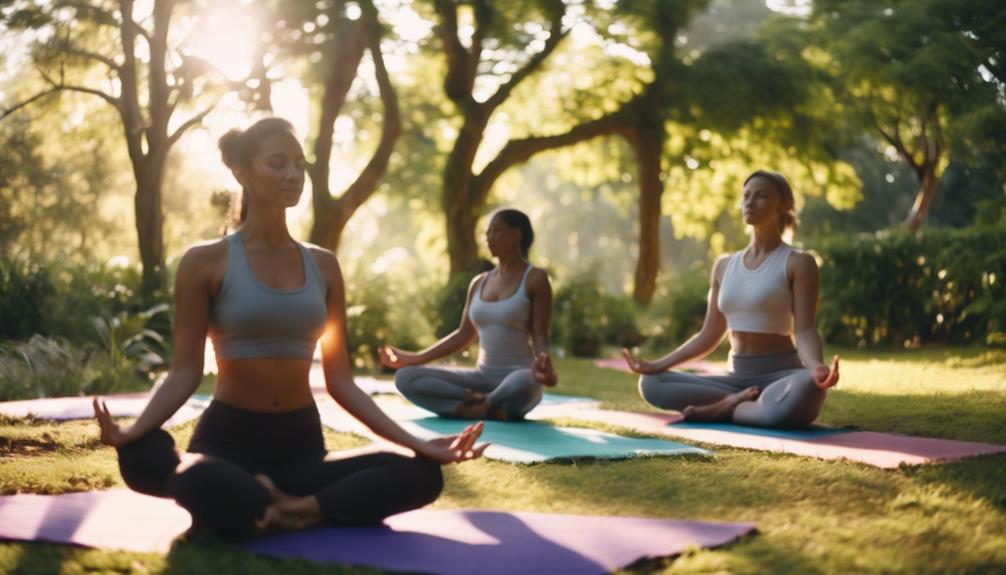What Do I Need For Yoga

Yoga has become a popular practice worldwide, celebrated for its physical, mental, and spiritual benefits. Whether you’re seeking to improve your flexibility, relieve stress, or achieve inner peace, the journey begins with understanding what you need for yoga. In this detailed guide, we will explore the essential items and tips to get you started on your yoga journey.
Understanding the Basics of Yoga
Before diving into what you need for yoga, it’s essential to grasp the basics of this ancient practice. Yoga originated in India over 5,000 years ago and encompasses various styles and philosophies. At its core, yoga combines physical postures (asanas), breathing techniques (pranayama), and meditation. Beginners often start with styles such as Hatha, Vinyasa, or Yin yoga, each offering unique benefits. Understanding these foundational elements will help you choose the right approach and prepare adequately for your practice.
The Essential Yoga Mat: Your Foundation for Practice
One of the most crucial items you’ll need for yoga is a high-quality yoga mat. A good mat provides a non-slip surface that ensures stability during poses. Look for mats made from eco-friendly materials like natural rubber or TPE, as these are durable and provide excellent grip.
When selecting a mat, consider thickness, as this can affect comfort. A standard yoga mat is about 1/4 inch thick, providing a balance between cushioning and stability. If you’re practicing on hard surfaces or have sensitive joints, you might prefer a thicker mat. Remember, investing in a quality yoga mat is essential as it will support your practice and enhance your overall experience.
Related Posts:
Comfortable Clothing for Yoga: What to Wear
What you wear during yoga can significantly impact your practice. Choose comfortable, breathable clothing that allows for a full range of motion. Opt for moisture-wicking fabrics to keep you dry and comfortable throughout your session. Popular choices include yoga pants, leggings, or shorts paired with a fitted tank top or sports bra.
Avoid overly loose clothing, as it may become cumbersome during poses. Additionally, consider the type of yoga you’ll be practicing; for instance, if you’re engaging in hot yoga, you’ll want lighter fabrics that will help keep you cool. The right attire can enhance your comfort and confidence, allowing you to focus entirely on your practice.
Yoga Props: Enhancing Your Practice
Yoga props can be incredibly beneficial, especially for beginners. They provide support, stability, and assistance in achieving proper alignment. Common props include yoga blocks, straps, blankets, and bolster pillows.
Yoga blocks offer additional height and stability in poses, making them particularly useful for those who are still developing flexibility. Straps can help you reach and hold poses more comfortably, while blankets and bolsters provide cushioning and support during restorative practices. Incorporating these props can deepen your practice and make challenging poses more accessible.
Hydration and Nutrition: Fueling Your Yoga Practice
Staying hydrated and nourished is vital for an effective yoga practice. Drink plenty of water before and after your session to maintain hydration levels. If you’re practicing in a heated environment, consider electrolyte-rich beverages to replenish lost fluids.
In terms of nutrition, aim for light meals or snacks about 1-2 hours before your practice. Foods rich in complex carbohydrates, like whole grains and fruits, can provide sustained energy. Avoid heavy or greasy meals, as these can lead to discomfort during your practice. Fueling your body with the right nutrients can enhance your performance and overall experience on the mat.
Finding the Right Environment for Your Practice
Creating a conducive environment for yoga is essential for maximizing your practice. Whether you’re practicing at home or in a studio, consider the following aspects: lighting, temperature, and space.
Choose a quiet, well-ventilated area with enough space to move freely. If practicing at home, consider dim lighting or using candles to create a calming atmosphere. You may also want to play soothing music or use essential oils to enhance relaxation. A peaceful environment allows you to focus better on your breath and movements, promoting a more fulfilling yoga experience.
Consistency and Mindset: The Keys to Your Yoga Journey
While having the right gear and environment is important, the most critical factor in your yoga practice is consistency and mindset. Set realistic goals and commit to a regular practice schedule, whether it’s daily, weekly, or a few times a month.
Approach your practice with an open mind, allowing yourself to grow and evolve. Yoga is not about perfection; it’s about progress and self-discovery. Embrace each session as an opportunity to learn about yourself, and don’t be discouraged by challenges. Cultivating a positive mindset will enhance your yoga experience and keep you motivated on your journey.
Conclusion: Embracing Your Yoga Journey
In conclusion, embarking on your yoga journey requires a combination of the right equipment, a comfortable environment, and a positive mindset. Remember that yoga is a personal journey, and what works for one person may not work for another. Start with the essentials: a quality yoga mat, comfortable clothing, and perhaps some props to support your practice.
As you explore what do I need for yoga, remain open to learning and adapting your practice as you grow. Whether you’re seeking physical fitness, mental clarity, or spiritual growth, yoga offers a unique path to wellness. Embrace each moment on the mat, and enjoy the countless benefits that yoga can bring to your life.